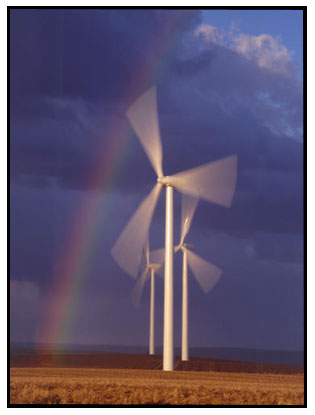|
|
Wind Power |
||||||||
|
In fluid systems such as air, the power per unit area transported is proportional to the cube of the fluids velocity. So the available power from the wind is roughly proportional to the cube of the wind velocity. This can be expressed in the equation:
where rho is the density of the fluid (kg/m3), v is velocity (m/s), and A is the area perpendicular to the direction of flow (m^2). The available power is dependant on the fluid density. At 15°C and 1 atm, dry air has a density of rho=1.226 kg/m3. Using the ideal gas law (PV=nRT), other values can be determined. Due to the fact that wind varies over time, the average power is the primary concern: in which f(v) is the fraction of time over one year when the wind blows at velocity v also known as the frequency spectrum. The variation of the wind speed as pertains to height is also of great concern. For idealized smooth surfaces, the average wind speed increases with height approximately as the 1/7th power.
An example would be that a wind turbine with a hub elevation of 50m will, relative to a height of 30m, see an average wind speed approximately 7.6% higher. Because average wind power varies as velocity cubed, the higher position can increase turbine power by approximately 24.5%. This general rule can be complicated by things such as: vegetation, topography, and adjacent wind turbines (large wind farms). Also there is increased costs the higher you get, so higher is not necessarily better.
|
Kevin Taylor - Spring 2007
Contact: fskdt3@uaf.edu
Physics 212 Web Project
Dr. D. Newman
University of Alaska Faribanks
